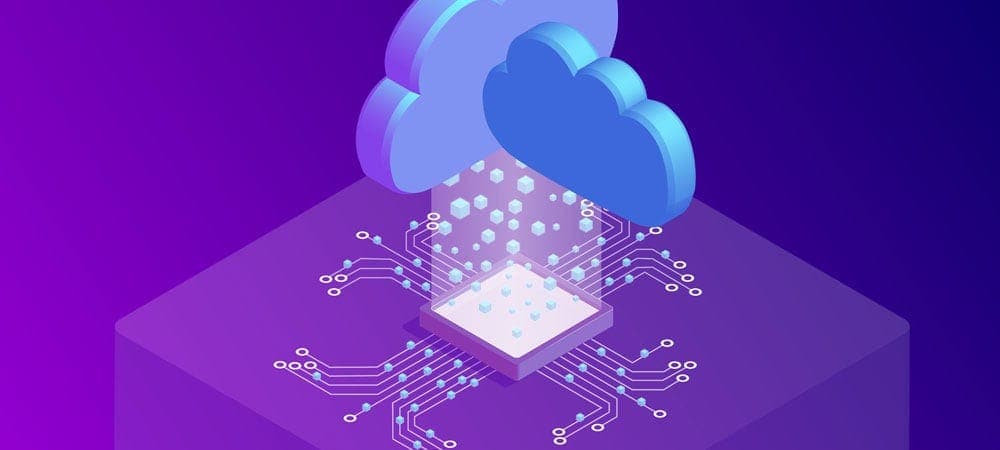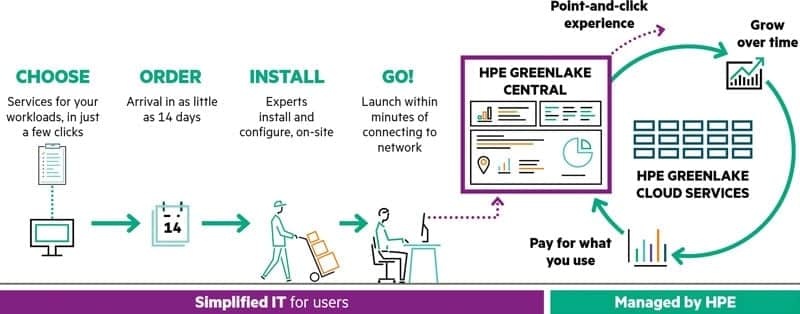Rise with HPE


German SAP users are generally skeptical about the cloud and even more skeptical about SAP cloud solutions, according to a DSAG survey conducted last summer. According to the survey, less than half of DSAG members (46 percent) generally have a "somewhat positive" to "very positive" attitude toward the cloud, and only a third are "somewhat satisfied" to "very satisfied" with cloud solutions in the SAP area.
At first glance, this seems to be a big deal for SAP's Rise strategy - but only at first glance, because cloud is not just cloud. If you want to move your SAP applications to the cloud, you don't have to move them to a remote cloud data center - you can keep them running in your own data center.
The basis for this is on-premises cloud models such as HPE GreenLake. They offer the same advantages as the public cloud - such as simplicity, flexibility and consumption-based billing - but in the customer's data center or at another location of his choice, for example at a large production site. The systems are operated by HPE, up to application baseline operation if desired.
On-premises cloud - what and how?
There are providers who mean by on-premises cloud only consumption-based billing for IT infrastructure - but in reality much more is required: for example, fast and simple scaling of system capacities as needed, operational responsibility by the provider with a master SLA agreement for every location worldwide, and a management portal through which the customer can very easily place orders, control costs, or overlook the status of his entire system landscape.
But how is it possible to deliver these benefits in the customer's data center? It involves thousands of building blocks in areas such as automation, analytics and artificial intelligence (AI), processes, globally distributed service locations - and not least, a lot of experience. In HPE's case, it's backed by more than a decade of learning and a slew of targeted acquisitions. Today, well over a thousand customers worldwide use HPE GreenLake, including large and small companies from all industries and public administrations. The GreenLake portfolio includes a large number of
IaaS, PaaS and SaaS services and a large partner ecosystem. Services include bare metal, hyperconverged systems, container platforms, machine learning operations, VDI, SAP, a range of industry solutions and many more.
So how does an on-premises cloud work? Here is just one example of many to illustrate the point: rapid scaling of system capacity in line with demand, which HPE essentially ensures by two means - a physical capacity buffer in the customer's data center and metering and capacity analysis using analytics and AI. Among other things, this determines the extent of the physical capacity buffer required. This can be activated and deactivated again within minutes.
Using long-term capacity forecasts, HPE determines if and when the physical IT infrastructure needs to be expanded so that delivery processes are triggered before a bottleneck occurs. Metering - based, among other things, on the technology of Cloud Cruiser, a company acquired by HPE - is also the basis for consumption-based billing and for the originator-based internal allocation of IT costs. The customer does the latter via the GreenLake portal, which it can also use for monitoring, compliance management, multi-cloud management and more.

GreenLake with SAP or with HPE?
Anyone who wants to transfer their SAP environment to an on-premises cloud model with GreenLake basically has two options: He can do it with SAP or with HPE. However, the respective offerings differ considerably, and it depends on the IT strategy, history and other preferences which offering is the right one for which customer. The difference in a nutshell: GreenLake as part of the SAP offering is a fixed predefined infrastructure service - GreenLake directly from HPE offers significantly more flexibility and choice.
Specifically, SAP uses the GreenLake concept for its S/4 Hana Cloud, Private Edition, Customer Data Center offering. As the name suggests, this offering can only be used for S/4. The customer has no choice in terms of databases, hypervisors or management tools, nor can applications from other providers be run on this platform. HPE GreenLake is ordered from SAP and is part of the overall Rise contract. HPE is responsible for operating the IT infrastructure (IaaS) with GreenLake up to the hypervisor level. SAP operates the application services on top of this and acts as the overall contractor for the complete stack.
With the Customer Data Center Option, the customer cannot exert any influence on either the SAP base operation or the IT infrastructure, very similar to using a public cloud model as part of Rise - but in the customer's data center, and therefore with advantages in terms of data sovereignty and latency times, for example.
For customers who have already migrated to S/4 Hana or want to migrate anyway, and who are also willing to adapt to SAP specifications, the Customer Data Center Option is therefore an attractive alternative to the public cloud. On the other hand, for those who do not want to do without architecture adaptations and thus an individual SAP system, and who also want to use the same on-premises cloud platform for other applications, GreenLake with HPE is the better solution.

GreenLake from Hewlett Packard Enterprise (HPE) and from SAP - a comparison for S/4 conversion.
Flexibility in the on-premises cloud
HPE GreenLake offers customers design freedom in many respects. For example, it is not necessary to migrate to S/4 to do so. The customer can move their existing system to the GreenLake model and if they want to migrate, they can do so within that model. Of course, this also means that the customer can take their existing SAP modifications, databases, management tools, etc. with them into the GreenLake model. Another advantage is that the customer can also have other applications run in the same GreenLake environment - this can make sense, for example, if these applications are closely intertwined with the SAP system.
GreenLake also offers flexibility in terms of operational responsibility. If desired, HPE can take over responsibility including SLA agreements up to application base operation - but if the customer wants to do more under its own responsibility, it can also use HPE services only up to an arbitrarily defined level and coordinate them individually with HPE. In addition to operating services, HPE also offers a comprehensive portfolio of consulting, migration and integration services in the SAP environment - HPE, by far the market leader in SAP platforms, has decades of experience in this area.
One question is still open: Often the existing SAP infrastructure is owned by the customer - so how does the transition to an on-premises cloud work, where the systems are owned by the vendor and provided to the customer as a service? One answer in the case of HPE GreenLake is that HPE's house bank, HPE Financial Services, buys the systems from the customer. So the customer gets an injection of capital that it can use as part of the GreenLake contract or for other digitization projects. When the systems reach the end of their life cycle, they are renewed under the GreenLake contract. HPE has set up a circular economy system for the legacy systems that are no longer needed: They are refurbished after complete data erasure and resold as used equipment.
Cloud paradigm shift
The public cloud has been an important driver of digital transformation in recent years. With increasing use, users have also become increasingly aware of its downsides - for example, with regard to data sovereignty, latency and integration with in-house applications. Nor has the assumption that the public cloud is generally more cost-effective than in-house operation proved to be true, because flexibility has its price.
With on-premises clouds, the rules of the game are now changing. Customers are getting the features of the cloud, but on their terms and under their control. The public cloud remains an important part of any IT mix, but now customers have a real alternative. This also applies to the SAP application - the application, in other words, that controls the core business-critical processes in many companies and comprises the most important company data. The future will show how SAP users decide.






